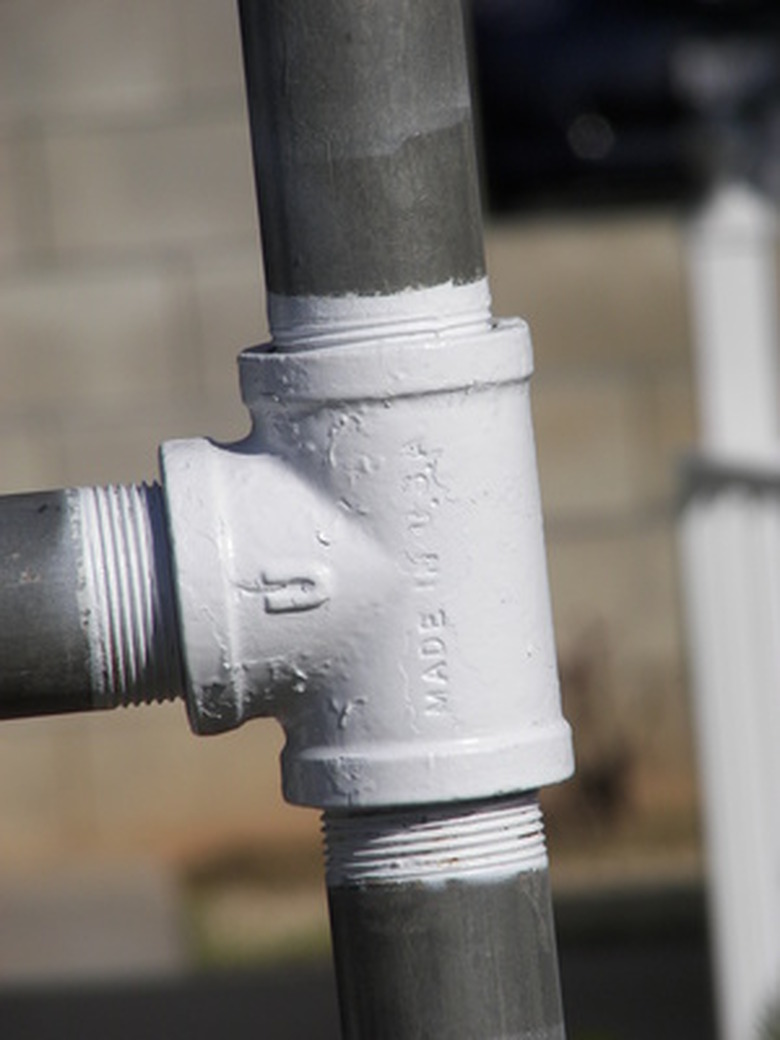How To Calculate Air Flow Rates
You can calculate flow rates for air in different portions of a pipe or hose system utilizing the continuity equation for fluids. A fluid includes all liquids and gases. The continuity equation states that the mass of air entering a straight and sealed pipe system equals the mass of air leaving the pipe system. Assuming the density, or the compression, of the air stays the same, the continuity equation relates the speed of the air in the pipes to the cross-sectional area of the pipes. Cross-sectional area is the area of the circular end of a pipe.
Step 1
Measure the diameter in inches of the pipe that the air travels through first. Diameter is the width of a circle measured with a straight line that crosses its center. Assume the first pipe has a diameter of 5 inches as an example.
Step 2
Determine the diameter in inches of the second pipe that the air traverses. Assume the measurement to be 8 inches in this case.
Step 3
Divide the diameter of each pipe by two to get the radius for pipe one and pipe two. Continuing the example, you have radii of 2.5 inches and 4 inches for pipe one and pipe two, respectively.
Step 4
Calculate the cross-sectional area for both pipe one and two by multiplying the square of the radius by the number pi, 3.14. In the example calculation that follows, the symbol "^" represents an exponent. Performing this step, you have for the first pipe: 3.14 x (2.5 inches )^2 or 19.6 square inches. The second pipe has a cross-sectional area of 50.2 square inches using the same formula.
Step 5
Solve the continuity equation for the speed in pipe two given the speed in pipe one. The continuity equation is:
A1 x v1 = A2 x v2,
where A1 and A2 are the cross-sectional areas of pipes one and two. The symbols v1 and v2 stand for the speed of the air in pipes one and two. Solving for v2 you have:
v2 = (A1 x v1) / A2.
Step 6
Plug the cross-sectional areas and the air speed in pipe one to calculate the air speed in pipe two. Assuming the air speed in pipe one is known to be 20 feet per second, you have:
v2 = (19.6 square inches x 20 feet per second) / (50.2 square inches).
The air speed in pipe two is 7.8 feet per second.
Cite This Article
MLA
Hirsch, William. "How To Calculate Air Flow Rates" sciencing.com, https://www.sciencing.com/calculate-air-flow-rates-6826326/. 24 April 2017.
APA
Hirsch, William. (2017, April 24). How To Calculate Air Flow Rates. sciencing.com. Retrieved from https://www.sciencing.com/calculate-air-flow-rates-6826326/
Chicago
Hirsch, William. How To Calculate Air Flow Rates last modified March 24, 2022. https://www.sciencing.com/calculate-air-flow-rates-6826326/
